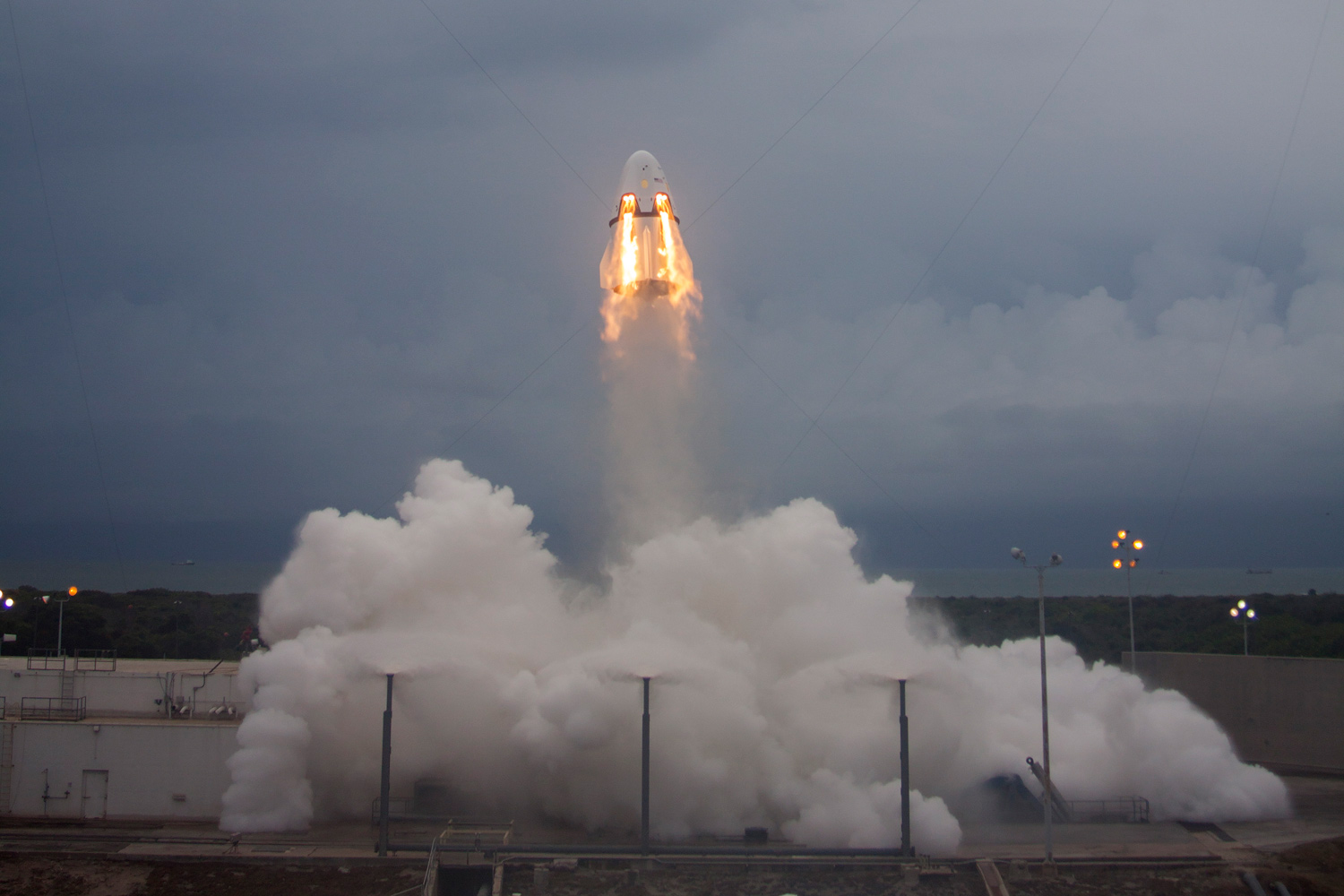SpaceX Must Still Prove That It Can Safely Launch Astronauts Into Space

The successful launch of a Falcon 9 rocket this weekend sets the stage for Elon Musk's SpaceX to regain momentum following its launch pad accident last fall, but the company is not out of the woods yet.
With the Federal Aviation Administration's blessings, SpaceX settled on a short-term solution to fix the problem that caused a booster to burst into flames on Sept. 1 as it was being fueled for a routine prelaunch test.
Modifying the fueling procedures, as demonstrated during SpaceX's launch Saturday from California, is a first step. The company is working on a new design for the containers of helium that sit inside of the rocket's fuel tanks to maintain pressure. Accident investigators traced the cause of the launch pad fireball to a helium canister in the rocket's upper stage liquid oxygen tank that failed.
NASA will be closely watching SpaceX's progress. The U.S. space agency has hired SpaceX, along with industry stalwart Boeing, to fly astronauts to the International Space Station, hopefully before the end of 2018. Since the space shuttles were retired in 2011, the United States has been dependent on Russia for crew transportation services.
SpaceX's plan to fuel its rockets after the crew is aboard has raised questions by NASA safety advisory groups. SpaceX super-chills its propellants to make them denser so more can fit inside the tanks. The rockets need the extra power so they can not only boost their payloads into orbit, but turn around and land back on Earth as well. SpaceX's ambitious business plans are based on reusing its rockets, which dramatically cuts the cost of flying in space.
RELATED: SpaceX Makes Spectacular Return to Flight, Launching 10 Satellites Into Orbit
Loading the cryogenics just before launch keeps them from boiling off as the rocket awaits liftoff. Skeptics say the procedure, known as "load and go," adds extra risk, particularly when humans are aboard, and figuring out how much risk is, in itself, another problem.
"Despite testing at the component and subassembly level, systems often display 'emergent' behavior once they are used in the actual operational environment. We are concerned that any determination of risk associated with 'load and go' would have signicant uncertainty," the Aerospace Safety Advisory Panel said in its annual report to NASA and Congress, which was released last week.
"We strongly encourage NASA top management to scrutinize this issue and ensure that any decision to accept additional risk … is justified by the value that will be gained. The decision should not be unduly influenced by other secondary factors such as schedule and budget concerns," the panel added.
NASA is particularly sensitive to issues of crew safety. Two space shuttle crews were killed during the program's 30-year history due to equipment failures triggered by unexpected and seemingly benign operating environments that turned out to be deadly. The 1986 Challenger explosion was due to a booster rocket O-ring that failed after a Florida freeze. The ring allow hot gases to escape from the rocket, triggering a catastrophic explosion 73 seconds after liftoff, killing seven crewmembers.
RELATED: Will SpaceX Get People to Mars Before NASA?
A second shuttle, Columbia, was destroyed as it flew through the atmosphere for landing in 2003. Unbeknownst to NASA, the spaceship's left wing had been damaged 16 days earlier when a suitcase-sized piece of foam insulation fell off the external fuel tank during liftoff. NASA didn't know the lightweight foam could punch a hole into a wing panel made of reinforced carbon composites. The accident claimed another crew of seven.
"The trick is to recognize when the hardware is talking to you BEFORE an accident occurs and react to it," said Mike Leinbach, a former shuttle launch director who led a team that literally pieced together debris and flight data recovered from the Columbia accident to determine the cause of the accident.
"For new hardware and its new managers, being proactive can be very elusive, especially if complacency and/or overconfidence sets in following a few successful missions," Leinbach told Seeker. "Be ever vigilant, (which is) easy to say, hard to do. And harder yet if egos cloud good judgment and engineering decisions."
NASA's goal for the new space taxis is that they reduce the odds of losing a crew on any one flight to 1-in-270, which is about three times better than the risk of flying on the shuttle following post-accident improvements. The primary threat to the new vehicles comes frompotential orbital debris impacts.
SpaceX plans an unmanned test flight of its passenger Dragon spaceship in November. Boeing is targeting a similar test of its CST-100 Starliner for June 2018.
WATCH VIDEO: Space Can Make You Go Blind
Originally published on Seeker.
Join our Space Forums to keep talking space on the latest missions, night sky and more! And if you have a news tip, correction or comment, let us know at: community@space.com.

Irene Klotz is a founding member and long-time contributor to Space.com. She concurrently spent 25 years as a wire service reporter and freelance writer, specializing in space exploration, planetary science, astronomy and the search for life beyond Earth. A graduate of Northwestern University, Irene currently serves as Space Editor for Aviation Week & Space Technology.
